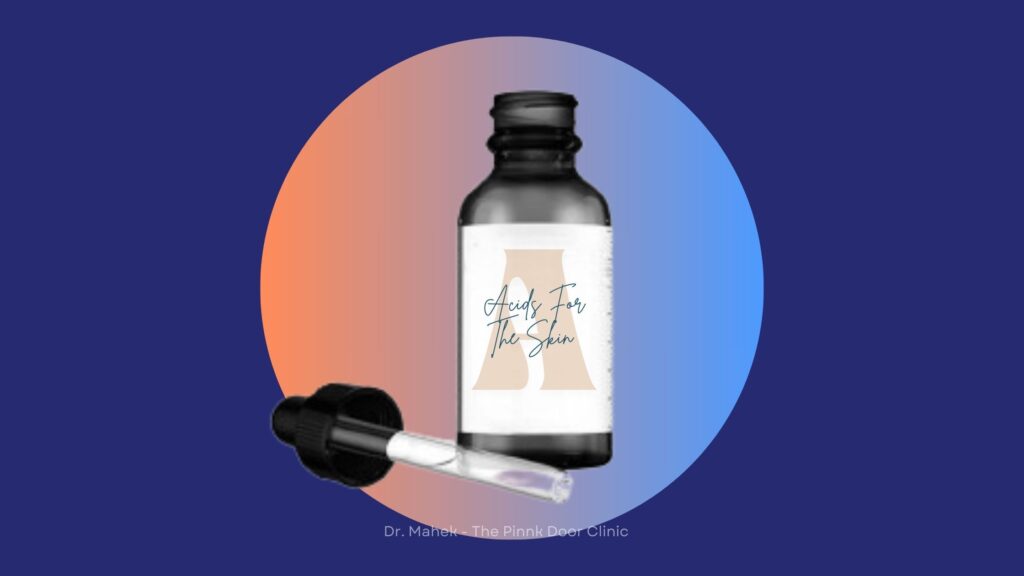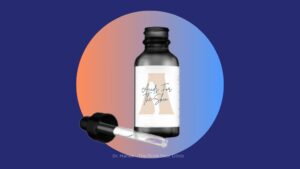Types of (Facial) Acids in Skincare | A Guide & How to Use?
Hyaluronic acid, salicylic acid, ascorbic acid, and glycolic acid are frequently utilized in skincare regimens and treatments. Each acid offers distinct benefits to the skin, contributing to damage reduction and improved skin barrier protection.
Ascorbic Acid
L-ascorbate or Ascorbic acid are active forms of vitamin C used in all sorts of medicines and skincare products. Vitamin C is a well-known product in skincare dairies, no skincare is complete without vitamin C either in toners, moisturizers, or pure serum forms vitamin C always finds its way.
Ascorbic Acid is antioxidant and anti-inflammatory it reduces skin redness, wrinkles, and acne by reducing free radicals and ROS generation that damages the skin. Free radicles damage the skin by increasing oxidative stress Ascorbic acid being an antioxidant nullifies this effect thus protecting skin from signs of aging.
The protective effect of ascorbate also works against environmental and sun damage to the skin. Vitamin C is a precursor for collagen so it helps in damage repair and makes skin look radiant. Ascorbic acid can be inculcated in the morning as well as during night skincare routine post toners.
Salicylic Acid
Salicylic acid is a beta-hydroxy acid (BHA) most commonly used in cases of acne-prone skin. The mechanism by which it prevents acne is salicylic acid enters deep in the pores and clears up all the dead skin cells, debris, sebum, and oils that usually clog the pores. Salicylic acid dissolves all the clogged materials and keeps skin pores clean.
Salicylic acid can be used in numerous forms like in gels, lotions, cleansers, serums, ointments, etc. Depending on one’s skin type the mode of application can be changed. As a BHA salicylic acid in high concentrations comes in various exfoliating peeling solutions, used in cases of acne scars, spots melasma, and acne. It can in included in both AM and PM routines.
Hyaluronic Acid
Hyaluronic acid is another well-known acid used for enhancing one’s skin. It is a naturally occurring substance present in our joints and eyes for the skin it helps in reducing inflammation thus lowering swelling and redness.
Hyaluronic acid is a humectant i.e. it helps retain moisture from the environment into the skin thus keeping the skin plump and well hydrated for a longer duration. This plumping effect of hyaluronic acid helps in an anti-aging look as the fine lines and wrinkles are reduced. The skin appears to be smooth and less irritated.
Hyaluronic acid cab be used daily in the morning and evening before moisturizers to lock in hydration.
Glycolic Acid
Glycolic acid is an AHA-alpha hydroxy acid it works on the skin by removing the top dead skin cell layer by giving a new fresh cell turnover. It is used in the exfoliation process where the dead cells are revoked by constant use of glycolic acid thus giving a fresh, brighter skin.
The skin texture is improved significantly thus giving a smooth toned new skin layer. Glycolic acid acid also reverses sun damage to the skin, wrinkles, pigmentation dark patches, uneven skin tone, etc.
Glycolic acid is usually available in the form of toners and serums that should be used 1-3 times per week depending on one’s tolerance. Sunscreen application is very important as glycolic acid increases sun sensitivity of the skin.
Kojic Acid
Kojic acid is the most common product used in creams, lotions, and spot treatments it is known for its effect on skin lightening, removal of pigmentation, and sun tan.
The way it aids in skin lightening is by preventing the production of tyrosine, the precursor that produces melanin, the pigment responsible for skin color. Kojic acid also acts as an antioxidant so protects skin from oxidative damage. It even tones the skin and reduces blemishes, dark circles, dark spots and makes skin brighter.
To be used daily for results in hyperpigmentation in a form that suits one’s skin always apply post cleansing and toning.
Lactic Acid
Lactic acid another AHA-alpha hydroxy acid like glycolic acid, also acts as a gentle exfoliator that helps in the shedding process of dead skin cells. By gentle removal of dead skin cells, lactic acid promotes the formation of new cells and gives a smooth skin texture.
It is also known for its hydration properties it holds moisture within the skin thus avoiding dryness and skin damage. It improves the overall texture of the skin by promoting smooth hydrated skin.
It is preferable to be used at night time in the form of toner, serums, or peels. Gradually increase the concentration depending on one’s tolerance.
Retinoic Acid
Retinol in the form of retinoic acid is used to reduce fine lines, wrinkles, pigmentation, and dryness. It plays a major role in boosting collagen production it is essential for the formation of new skin cells, skin elasticity, and firmness. It also helps in the prevention of acne breakouts by unclogging the pores.
Retinol should be part of night skincare routine and applied post cleanser and toner but before moisturizer.
Mandelic Acid
It’s used as an exfoliator and is an AHA found in peels and serums. It aids in exfoliating the skin and eliminating dead skin cells to encourage cell renewal. In anti-aging products, it aids in reducing and reversing fine lines and wrinkles. Mandelic acid possesses antibacterial properties, which aid in decreasing acne.
As it is often found in toners, serums, and peels it must be used 1-3 times a week. The initial concentration of usage should be low later can be increased based on the tolerance of the skin.
Azelaic Acid
Azelaic Acid is known for its anti-inflammatory properties and is effective in the treatment of rosacea and acne. Rosacea is an inflammatory condition in which the skin around the nose and chicks becomes red due to the development of rashes. Azelaic acid also helps in skin brightening, and evening skin tone by reducing hyperpigmentation. It also helps in the treatment of pimples and acne by unclogging pores thus preventing bacterial infections induced acne.
Azelaic acid can be used daily in the morning and at night. Can be combined with bioactive components like niacinamide to give maximum results.
Fleuric Acid
Fleuric acid offers strong antioxidant protection by neutralizing free radicles and protects skin from damage caused by environmental factors and UV rays. It stabilizes and enhances the effect of other potent antioxidants like vitamins C and E.
Fleuric acid avoids a discoloration of the skin caused due to sun damage. It also helps prevent and fade dark spots and redness of skin. Commonly this acid should be used in the morning routine coupled with vitamins C and E to increase effectiveness and protection against UV rays.
Malic Acid
Another AHA on the list, similar to others, it functions as a skin exfoliator. It eliminates dead skin, encourages cell turnover, and enhances texture. Malic acid enhances skin hydration levels by retaining moisture, resulting in a smooth texture. It also enhances skin tone and reduces hyperpigmentation.
The use of malic acid should be done based on the skin’s tolerance. It should be applied after cleansing, as it is included in exfoliating masks and peels.
By incorporating all the above acids regularly and consistently into one’s morning and night skincare routine, one can effectively address various skin concerns while maintaining healthy, radiant skin.





